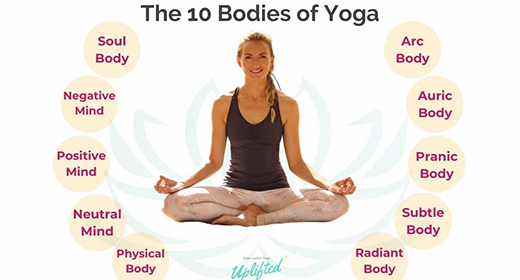by Liberty Baldovino: Most of us ignore the way we breathe. After all, it’s an involuntary action of the body, right? It’s something that happens naturally…

But did you know that being aware of the way you breathe and doing controlled breathing exercises can lead to numerous benefits to your health and well-being?
Benefits of Controlled Breathing
Controlled breathing activates the parasympathetic system which is responsible for the “rest and digest” response of the body. Yes, breathing exercises help your body to slow down. Try to remember the feeling you had after eating a large meal. Did you feel sleepy or lethargic?
That’s your parasympathetic system at work. It slows down other bodily functions (heart, lungs, and muscles) so it can focus on digesting the food.
And if you did take a nap afterward, didn’t you feel refreshed and more in tune with yourself and the environment. Didn’t you feel less stressed? More intuitive? Did you have better judgment?
Yes, those are exactly the benefits of controlled breathing. It can help you relax, gather your thoughts, relieve stress, improve your memory, boost your health and wellbeing and a plethora of other benefits.
These are not mere suppositions. Controlled breathing has been practiced since the ancient times, but it’s only recently that modern science began to study it carefully.
Studies on Controlled Breathing
- A study conducted by Rik Gosselink, PT, PhD entitled “Controlled breathing and dyspnea in patients with chronic obstructive pulmonary disease (COPD)” showed how this type of breathing aids in the “improvement of (regional) ventilation and gas exchange, amelioration of such debilitating effects on the ventilatory pump as dynamic hyperinflation, improvement of respiratory muscle function, decrease in dyspnea, and improvement of exercise tolerance and quality of life.”
- Harvard Health Publications, in its article, Relaxation techniques: Breath control helps quell errant stress response, states that, “Deep abdominal breathing encourages full oxygen exchange — that is, the beneficial trade of incoming oxygen for outgoing carbon dioxide. Not surprisingly, it can slow the heartbeat and lower or stabilize blood pressure.”
- In his book Breathe, Dr. Belisa Vranich states, “Changing your breathing truly does affect—immediately—the body, mind, and soul. And, most important, the impact takes place at both the cellular and the muscular levels.”
- Dr. Richard P. Brown and Dr. Patricia L. Gerbarg, in their book, The Healing Power of the Breath: Simple Techniques to Reduce Stress and Anxiety, Enhance Concentration, and Balance Your Emotions, discuss how breathing practices help enhance the coordination of the mind and body that lead to the calming of the stress response and positive effect on the brain.
3 Types of Controlled Breathing Exercises and How to Do Them
Rock and Roll breathing (Yogic Breathing)
Rock and Roll Breathing
Stressed? This breathing exercise will work for you – and it’s as easy as rock and roll! All you need is a chair. You can do it anytime, anywhere, even in the office. Here’s how to do it:
- Sit on the edge of a chair.
- Inhale, lean backward and expand the belly as you count to five.
- Exhale, squeeze the breath out as you curl forward, leaning your head forward. Do this as you count to five.
- Repeat 20 times.
*Counting to five while inhaling and exhaling, according to Psych Central, maximizes the heart rate variability (HRV), a measurement of how well the parasympathetic nervous system is working.
Energizing HA Breath (Yogic Breathing)
Energizing HA Breath
Tired? Sleepy? Need to be more productive?
Then get up from your chair and do this energizing HA Breath exercise! Here’s how to do it:
- Stand straight, elbows bent, palms up.
- Inhale while pulling your elbows behind you. Palms still facing upward.
- Exhale quickly, pushing your hands forward with palms downward as you say “HA” loudly.
- Repeat 20 times.
3. Coherent breathing
Cherent Breathing
This should be your go-to breathing exercise. Initially, you’ll find it difficult to master because it tries to help you change the bad breathing habits you’ve acquired over the years. Yes, it will take some extra effort to undo old habits, but it’s all worth it!
Here’s how to do it:
1. Sit up straight, arms over your belly.
2. Breathe in slowly to the count of five. You should feel your belly rising.
3. Pause.
4. Breathe out slowly to the count of six.
5. Repeat 20 times.
After doing these exercises, you’ll feel relaxed, more focused and less stressed. Practice them regularly and you will experience a marked change in how your mind and body works.








































